#its meant to be in a series of 3
Explore tagged Tumblr posts
Text
I've finally finished my life series art yipee





Im so proud of these considering i've never tried anything that looks like stained glass
Theres also a Cleo one in the reblogs
As usual click for better quality
Flat colours (and me yapping about them) under the cut
These are also not edited for better colours just straight from the art file, idk i can never get colours just right so i usually edit them in my gallery app lol





The line art colour match the characters vibes they're not really lore based but you know what is
The poses. Obv grain is looking at the camera (and has eyes) cuz he's a watcher but also scott and martyn are looking to one side cuz they were happy about their win and pear and scar are looking to the other cuz they were sad/confused
None of them really have facial features cuz like they're players in a game come on why would they ever have an actual identity other than 'player'
Also look at scotts bow and scars cane please i put way too much detail into them
Okay enough yapping now (i lied theres more in the tags)
#scars one very much was not meant to have an eye as the background but oh well#it looks cool#so lets pretend its like he's still alive related or something#i may have done these all in like 4 days and ignored my school work way too much during it#so now im gonna not draw again for like 3 months prob#also the colours were so fucking hard to figure out for the martyn one#who decided he should be represented by mars (fameously the RED planet) when his coulorscheme is green#also also fun fact the dogwarts banner is a different red from the coral#but the red blood on his sword is the same as dogwarts red#no im not insane about him why would you ever think that#okay end of yap#life series#life series art#third life#last life#double life#limited life#secret life#grian#scott smajor#pearlescentmoon#martyn inthelittlewood#goodtimeswithscar#why must there be so many tags#art#my art#i might do like a tiny cleo one cuz i love them too much to not include her
158 notes
·
View notes
Text
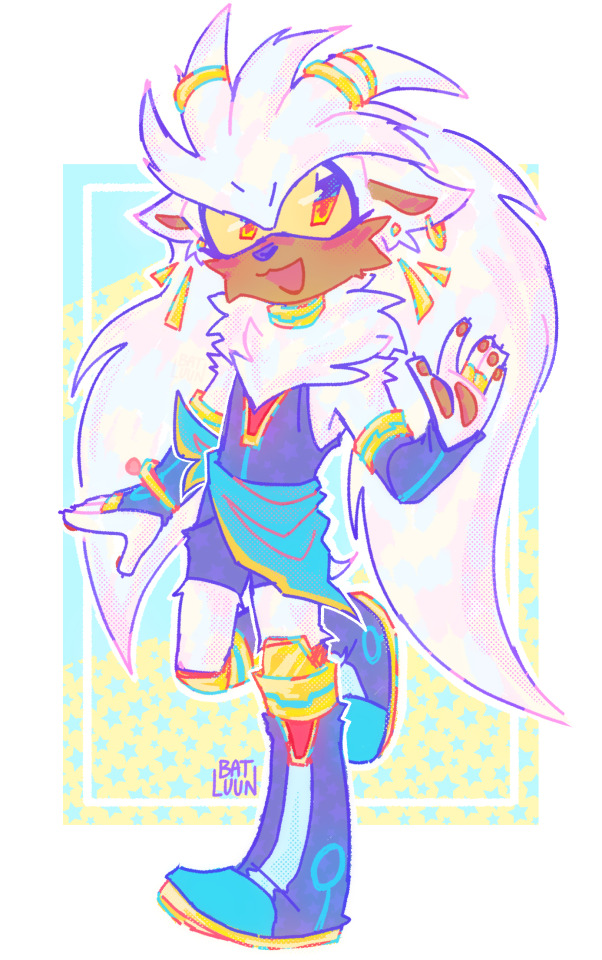
the only girl that matters <3
#my art#i love silver#his ears are on his side cuz i can never fit them on top of his highfive lookin ass head#i didnt wanna make his fur just white or grey#so if u look closely its actually pink/yellow/blue with white on top of it w 55% opacity :3#also the shirt was meant to be fully open in the back to make room for his back quills#BUT I FUCKING FORGOT TO DRAW EM AAAAAAAAA#anyway enjoy? lol :D#sth#sth fanart#sth fandom#sonic#sonic series#sonic fanart#sonic the hedgehog#silver the hedgehog
389 notes
·
View notes
Text

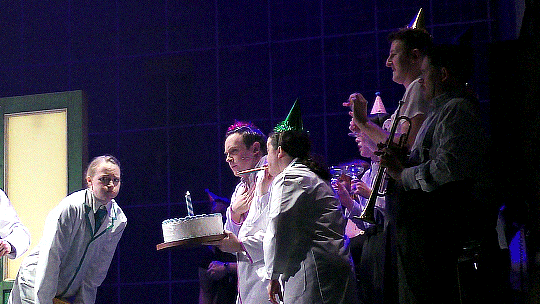

the original cast of operation mincemeat's final performance » [3/?]
#broadwayedit#theatreedit#musicaltheatreedit#musicaledit#musicalgifs#natasha hodgson#david cumming#operation mincemeat#operation mincemeat musical#geri allen#jak malone#zoe roberts#sean carey#christian andrews#.gif#📸: lasagna#lastperformance*#this wasnt meant to be a daily series but i guess its number 3 in a row
67 notes
·
View notes
Text

Goober...
#HE'S LIKE#THREE#BUT WITH NO INSECURITIES#I HATE HIM (positive)#god i CANT wait for the crossover#i want the one-sided beef with 3 so bad#but knowing how much younger the demographic for colourblocks is compared to the later series of NBs its probably just gonna bestie scenari#like purple is “royalty” and three is a jester#They didnt bring a magic mirror from what i can remember so its possible the numberblocks wont be multiplying huh?#i guess that could be why they took many large numbers with specifically 100 leading the mission#they'll most likely just be dividing#Actually im not even sure if the colourblocks have ever seen their reflections before????#their water is B L U E blue#subtractive color mixing lesson when :[#they already touched on additive (cmyk) when is the lightshow❗️❓️#i keep going on tangents#why was purple in the Christmas special?#he isnt really a Christmas-y color#is he a fan favorite?#is it because he has a crown and those fake paper crowns in crackers are an important part of british christmas?#anyways#colourblocks#learningblocks#purple colourblocks#i meant additive color mixing i mixed up which was which
24 notes
·
View notes
Text
I had fun with the Ninjago one so probs gonna do it with the other semi niche stuff I'm into
#tangled the series#rapunzel’s tangled adventure#tts#rapunzel#eugene fitzherbert#cassandra#varian#pascal#mother gothel#this show is very funny because its def meant for like 9 year old girls#but then it has all this lore???#also#if I had a nickel for every time I followed a ninjago artist only to find out they are also a tts fan#id have like 3 nickels#so far#to take from that what you will#as long as it is that you should watch both shows lol#poll
874 notes
·
View notes
Text

so. uh. Wild Life finale huh
#wild life spoilers#life series spoilers#uhhhh okay wait i need to ramble a bit more here first to then get into the finale stuff#because. im putting my thoughts and spoilers in the tags#so fun fact i waited for 3 hours avoiding spoilers for Pearl’s pov to then find out it’s getting posted tmr#so. those were 3 insanity inducing hours#anyway. so uh. what the fuck was that#it was wild. ill give it that. it was wild and nothing else#the winner seemed fitting the final battle IS wild but. okay? i dont. what arcs actually got resolved here#that just didnt feel like a proper ending yknow??? i know its improv and all that and none of it is planned but. i can at least say that i#feel like the wild card mechanic as a whole was too intrusive for a life series gimmick#and as a result none of the established arcs/plots/relationships can get a somewhat satisfying conclusion. because oh wowie theres a fucking#snail chasing me again. oh theres vexes everywhere oh wow hey uh Gem i know we haven’t really come to any meaningful end to this fight we’ve#been having all season but can you help me with a trivia question. oh oopsies you died to a vex. oh well#so those are my. initial thoughts#Scott getting permakilled by a shot meant for Joel was awesome though 10/10#mcyt
35 notes
·
View notes
Text
you are my sunshine, my only sunshine
you make me happy when skies are gray

(prompt fill for @mcspirkevents' mcspirk bingo prompt "gone with the wind".)
static frames below:
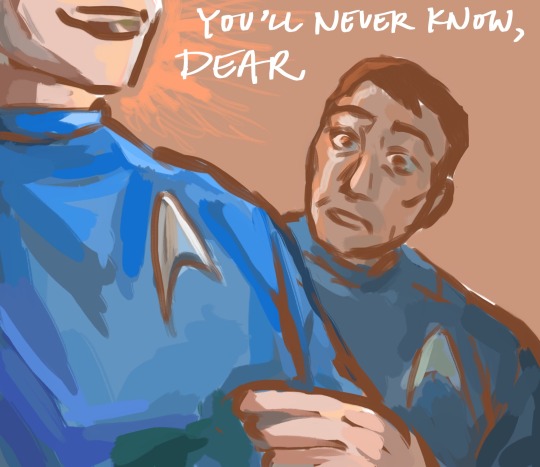

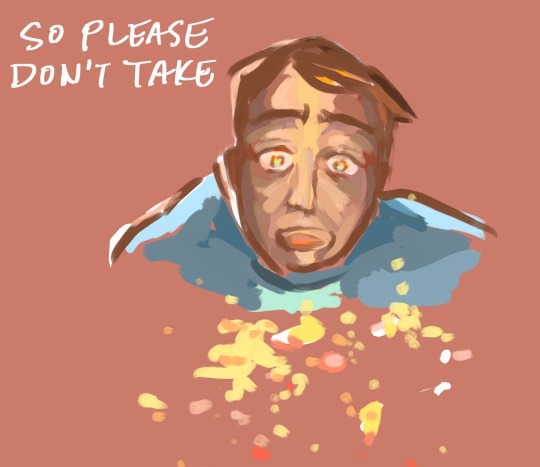
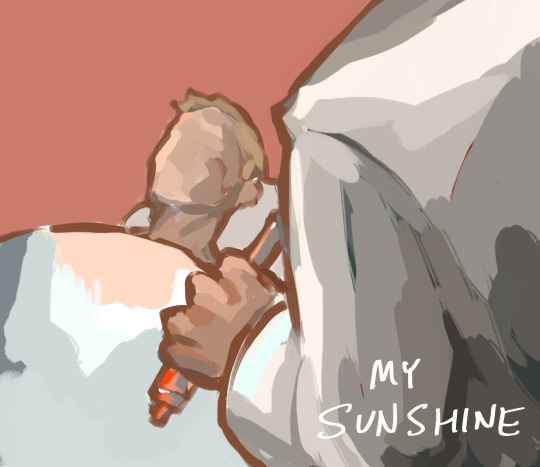
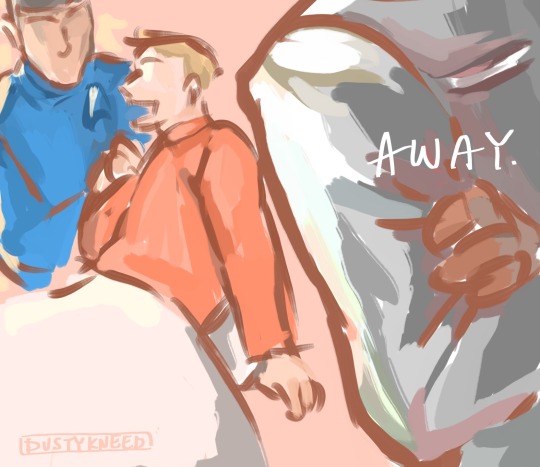
ouch! neck deep in aos bones feels rn... lmk if i should make a fix-it or somethin
#yeah so yesterday i said id try not to get distracted.. Guess how well that went LMAO#SORRY BONES hes going thru it in this one but literally this is all aos canon. aos is so mean to him and for what#not a single drop of closure... tos bones would flip shit if he found out. Thats the real reason why bones prime never shows up in aos#YEAH BTW PLEASE LOOK AT THE STATIC FRAMES PROCREATE HAS A ASTRONOMIC GRUDGE AGAINST THE 3RD SLIDE FOR SOME REASON#it would NOT stop crunching that one single GODDAMN FRAME in the gif. like full on colour blowout. like WHAT DID IT EVER DO TO YOU#YEAH SO I HAD TO SCREENSHOT IT AND PUT THAT IN THE GIF. EXCEPT MY IPAD SCREENSHOTS THINGS WEIRD. so its CONSPICUOUSLY BRIGHT#the 3rd and 4th frames are meant to have the same background color. every time i watch the gif i am filled with unimaginable rage#WHAT DID THAT FRAME EVER DO TO MY IPAD. what unforgivable crimes did it ever commit to be disrespected like this#ok rant over tags now :))#star trek#star trek aos#star trek fanart#mcspirk bingo#mcspirk#mcspirk fanart#spones#mckirk#spirk#star trek alternate original series#aos#spones fanart#leonard mccoy#bones mccoy#spock#jim kirk#did not use a single ref so the fact that the uniforms are reasonably legible as aos is a win (not like i use refs for anything else lol)#spirk is holding hands in that last frame!! gay people moment#OH AND I DID THIS IN LIKE. AROUND 3 HOURS? ive been meaning to draw that first frame for ages now so YIPPEEEEE#i did have a different caption in mind tho. Guess ill redraw it in the future LMAO#dust medibang paints
130 notes
·
View notes
Text
I dont think Mob is naive as much as he's socially unaware, like the reason why he trusts Reigen so blindly is a bit more complex than just him being naive
Cause Mob reached out to Reigen because he was desperate to find someone like him, someone who understood his psychic specific issues, someone that could truly know what he's feeling and going through and give him guidance and support
Post incident Mob's thinking process was something along the lines of my powers hurt people -> my powers are bad -> my powers (my emotions, my instincts, myself) cannot be trusted
So he lost all confidence and trust in his own actions, resigning to being as passive as possible to avoid any further damage to anyone else, thus he started doubting his own perception of reality too
He's a kid already struggling with being ostracised for being socially inept, who just got traumatised and all of his insecurity increased by the tenfold, he doesn't know how to process what he's going through. He needs help.
And here comes Reigen, seemingly reliable, a responsible adult in a child's eyes, someone who claims he can understand him
Even tho Reigen doesnt. But it doesn't matter, because Mob finds comfort in his words and takes them to heart
Even if Reigen doesn't fully get it, even if he doesn't see the bigger picture, even if his advice isn't always the best
Eventually, Mob grows up, realises Reigen isn't as honest as he seemed through his 11 year old perspective, but like most things, he refuses to acknowledge it on a deeper level
Mob knows, but never tells Reigen, never thinks about what all those lies mean to him (ofc until he forces himself to face those doubts regarding Reigen, to properly acknowledge both of their flaws and accept them as they are, I should scream into the void about Confession Arc more God)
Due to his lack of trust in himself, Mob has relied on Reigen for years now to shape his moral compass, his thoughts, his decisions
Because well, Reigen lies, sure, but he isnt a bad person. When he hurts Mob, it isn't intentional or with ill intent, he still wants the best for him, what's the issue?
Except that it stunts Mob's growth. He doesn't develop as a person, doesn't have goals or wishes or ambitions, can't make choices on his own, he doesn't even let himself acknowledge his own emotions, he refuses to let himself exist
But Mob realises in time that he wants more than that, he wants to become better and be independent and feel again
Still, he puts the acknowledgement of the lies on hold for as long as he can, unwilling to question the way things are
This can make him feel a little naive, he constantly relies on Reigen and trusts his decisions and raises questions rarely until separation arc when he finally puts his foot down
And I do think that moment is the most resounding proof we have that Mob knows and allows himself to be used by Reigen, not wanting to shake the status quo, until he gets fed up
I mentioned the social ineptitude at the beggining but idk if I should even elaborate on that, you've watched the show, you know what I mean
He's blunt and can't read social cues or tonality that well and can't speak in front of crowds and is overall pretty awkward and I do think some people conflate that with naivety
Mob is still a child, he doesnt fully understand how the world works at the ripe age of 14 years old, but some folks take that as him being inherently naive/innocent/whatever which I don't find true
#ppl do a similar thing with seri but for different reasons but i do think in his case its worse cause thats a whole ass adult#anyway. i dont think im saying anything new i just wanted to ramble <3#i missed mobposting what can i say#ik i saw somebody talk about this in a more eloquent way but i doubt i could find the post cause i dont think i rbed it so rip#mp100#mob psycho 100#kageyama shigeo#that ova needs to come out already im going insane#cine te a intrebat#also hope i didnt come off as too negative towards reigen or smth#but like. my favourite part of confession is him saying (i didnt know!) LIKE YEAH. U DIDNT. LMAO.#ppl treat him as a bit too reliable sometimes and dont give him a lot of room to grow like Reigen isnt even 30 yet!! he aint that old!!#he still needs to get HIS own shit tgt before giving out advice just saying. also he totally doesnt understand mob fully. how can he??#he never mentions the incident with ritsu and considering mobs inclination of never telling anyone anything unless prompted#i doubt he knows... like reigen genuinely doesnt know the extent of mobs trauma!! when he said I Didnt Know he meant that shit!!!!!!#which is like. fine. cause to me whats important is how he always wants to protect mob and support him and help him#even if he doesnt always know how. even if advice backfires. hes always there and hes always trying and hes just as human and flawed as mob#himself#ig what im getting at is just that im bothered by the Flavour of reliable adult fandom is giving him. hes a lil pathetic and#fucks up sometimes and thats fiiiiiine. i feel like i talked shit about reigen but i do think hes a good guy and IS reliable just not in the#gives great advice way. but in the Knows How To Talk And Bullshit His Way Through Everything and Has Genuinely Good Intentions (usually)#and will throw away all of his self preservation if the situation requires him to. his advice is good but can be vague idk ONE rlly managed#to balance his pathetic side with his helpful reliable side and i dont think i articulated it the best way but like.... hes simultaneously#pathetic and sad but also the most sane and reliable adult in this show. rant over see u next time byeeee
290 notes
·
View notes
Text
worldbuilding thing I've been wondering about:
how do you handle gender identity, gender expression, and/or gender stereotypes, within your omegaverse writings?
this goes for ocs and for fanfics!
if alphas are physically male in the way we'd consider a human to be physically male, that's a statement on their sex, yeah? not their gender.
you can have the body parts implied there and still be a gender that is not "man". so how's that work for omegaverse? especially if alphas can be male or female.
how do you describe gender within your omegaverse? is it based more around dynamic / secondary? (alpha/beta/omega) or around sex? (male/female/others if they apply)
do people get gendered expectations assigned to them based on their sex, on their dynamic, on the combination of both?
(ex: is there a difference between the gender roles given to a female omega versus a male omega? are the stereotypes for a male beta like or unlike those of a male omega?)
could there be such a difference between female alphas, female betas, and female omegas, that only some female people are considered women, while others are labeled with some other term due to their dynamic? or are all female people considered to be women? (assuming they're all cisgender...but if you've got trans headcanons I wanna hear those too!)
I'm curious about this because it's reasonable to say something like "our image of what is masculine appearance / behavior is shaped by our society and time period," right? (since male doesn't have to equal man or masculine, but there's often some connection)
but that structure wouldn't be built from the same stuff in omegaverse. since behaviors and such could be associated with different groups.
so...if a male alpha is seen as a feminine presenting person, what does that mean in your verse?
are masculine and feminine less about what exists in your verse and more about the limitations of our own language?
is it something else altogether?
#omegaverse#sfw omegaverse#omegaverse worldbuilding#omegaverse headcanons#everyday the temptation to use neopronouns in omegaverse grows stronger#why would there be 2 genders if there's 3 dynamics and the dynamics are almost more important to the story than the 2 sexes are?#assuming that the dynamics are secondaries and not primaries#gonna throw gender markers into a blender#and throw them at the secondaries and see what sticks#i wanna read a story where being an omega is male coded#male omega? female omega? doesnt matter you're a boy now#simply because the instinct is to code omegas as feminine and turning stuff upside down is neat#i might try it if i can ever stop throwing random tropes into the blender with omegaverse ones to see if its tasty#see previous post#meanwhile my brain: monster taming tropes? plus omegaverse? it would work#also my brain: alpha becomes a magical girl. do it. it would work.#also my brain: mecha series where the pilots start to form a pack bond as they increase their teamwork enough to control their combo mech...#also my brain: i hear you saying that there's no need for a/b/o mh but why not? hunters are already regular people!#...meant to write irregular people in that last tag and too lazy to fix lol
27 notes
·
View notes
Text
Last arcane episode ever..... here we fucking go....
#50 MINUTES YEAAAAHHH!! IM SO GLAD THEY HAVE BEEN GETTING LONGER THERE WAS NO WAY!!!#the last drop no..... YEEEEEEEEEEES EKKO!!!!!! OH MY GOOOOOD YEEEEEEEES always a dance with you OOOOOOOOHHHHH she even has the same hair 😭#is she gonna build the new zaun for isha.... like vander wanted for vi and powder.... 😭😭😭 with ekko 😭😭😭#watching jinx kill herself over and over is something else that was so funny.... im sorry but ajdkansk#WHATS WITH THOSE CUTS WHATS GOING ON.... WDYM WE ARE MEANT TO LOSE THIS FIGHT??? IN THE FUTURE HE SAW RIGHT???#OH ITS THAT GIRL VI IS CARRYING OMG BUT SHE IS LOOKING FOR JINX!!! NOOO SHE FUCKING DIEEED AMBESSA IS A BEAST!!! DID THEY GET CAIT???#VANDER NOOOO OOOH ITS VIKTOR TOO!!ITS OOOOOOVER maddie being there still..... a consensual workplace relationship... cait....#LORIS!!!! VIIIIIIIIIIIII caitlyn looks so good..... and vi too.... but did they run out of armors.... the guy who left his family DIED TOO!!#caitlyn that was so hot.... they got her.... MADDIE!!!! WHAT THE FUUUUUUCK I THOUGHT THAT WOULD NOT EEEEEVER HAPPEN!!! AK WITH HER OWN GUN!#OH MY GOD MEL!!! MADDIE EXECUTED FOR HER CRIMES!!!! i know people are cheering!!! JINX ON HER BLIMP!!! the egg was a distraction.....#jayce be ready for your divorce.... THE HALO!!! THE VOICE!!! his voiced softened when he said to see you omg... SEVIKA NOOOOOOOOO#cait and mel joining forces to maximize their joint (literal) slay against ambessa.... and vi and jinx vs vander.... cruel#beef squashed..... no way she died????? omg... we havent seen caits left side.... and she was bleeding.... one fear. VIKTOR IS SO TALL!!!#how does it feel to look up jayce.... also jinx saying they are always together 🥺🥺 they are flying again.... omg jinx looks so scared...#OH NOOOOOO SEE CAIT HURT HER EYEE viktor saying they want better lives but emotion clashes with reason after a season of just that.... omg#series thesis.... this is actually so meta if i may say so.... vander and silco.... jinx and vi and the rocket... cait and ambessa....#and finally jayce saving viktor.... and jayce searching for the arcane after he was saved as a kid.... all of it..... ALL OF IT....#THE BOY SAVIOR!!!! VIKTOR IS BACK!!!! HE WANTS HIS PARTNER BACK OMG#YES THE MAGE IS VIKTOR!!!! OH MY GOOOD!!! ONLY YOU CAN SHOW ME THIS! CAITVI FUCKED ON SCREEN AND SOMEHOW THIS IS GAYER!!!#JAYCE!!! YOU ARE ALRIGHT!!! EKKO MADE THAT WITH AN INVERSION OF JAYCES RUNE!! OF COURSE!!! THE WTO MEN AND THE ANOMALY!!!#they are literally adam and steve... VI OMG!!!! SHE CANT TAKE IT NOOOOOO JINX AND VANDER!!!! NOOOO EKKO ALONEEEE NOOOO#SEVIKA COUNCIL MEMBER!!! CAIT GAVE HER HER SEAT!!! AND SINGED AND HIS DAUGHTER!!! MEL WHAT THE HELL!!! BACK TO NOXUS???#caitlyn seeing that jinx escaped through the air ducts... yeah..... she is on that blimp#can you believe we ended arcane with two happy lesbians..... like everything went to hell jayce and viktor saved it and disappeared....#through it all one thing remained.. two lesbians in love <3 can we get an applause for two lesbians in love.... they made a band about this#(love of lesbian)#talking tag#watching arcane#watching arcane season 2#you know towards the end the characters looked a lot more like normal 3d animated... idk how to explain it
14 notes
·
View notes
Text
Author reveals just dropped for the Fanged Four Flash Exchange over at @otherworldlychemistry ! I was gifted an utterly beautiful spru reunion - The Way, it's absolutely fantastic and hits square in the feels and has ART WITH IT OMG y'all should check it out!!!
And here is my contribution - Dreamt of Drowning, @mamabewear and I ended up being paired together and blindly unknowingly writing each other spru reunions, cuz that's what mine is too. Pls enjoy! a lil rescue mission!
#buffy the vampire slayer#angel the series#spike#drusilla#spike x drusilla#sprusilla#i am lost in the squee#sprusilla reuniting in the future#because they are meant for each other#soulmates#no matter how long its been they will always circle back to each other#one of these is spike pov and one dru pov#they ended up being perfect companions <3 <3 <3 just like spru
6 notes
·
View notes
Text
Kinda rambley thoughts because my Christmas season entertainment has been rereading+getting up to date with Tower of God. Very general impressions on how rereading felt like, especially after years of not reading and legitimately thinking I wouldn't ever touch it again (spoilery tangential mentions to the last events so beware??).
Going from 'maybe I can reread this arc i liked' to 'actually let's reread the entire thing and if i keep liking it i'll get up to date i guess?', it's amazing how starting from the beginning made the issues in season 3 leagues that much more bearable and how much ToG gains when read as a whole instead of weekly.
Because, the foreshadowing is there and the thematic parallelisms are there. Knowing that the plot is going to end up with full focus on Traumerei (and Gustang's quest to get rid of the Great Warriors, because I spoiled myself that much when I was determining if I actually wanted to give the story a genuine chance) makes the narrative decisions in early Season 3 especially a lot more understandable. Actually remembering all the bits about Blue Thryssa (and the mention in the Floor of Death that it has administrator rights for some reason) makes its appearance as a power paralleling the Red Thryssa in an official manner that much better too
And that struck me in particular because I remember i was already spot reading at that point and getting increasingly confused and frustrated. A lot of the foreshadowing and buildup had happened so long ago i just... didn't remember it.
Do I still prefer season 2? Yes, for a multitude of reasons. I understand why season 3 had to focus on characters like Yama or even Dowon, but it felt much to the detriment of those characters I was already invested in. Wangnan come back pls the plot has evolved to a point your involvement would add So Much beyond me missing your silly ass. Tho at least his plotline has actually progressed (even if not through him directly), some of the other main Regulars have their plotlines 100% frozen as far as we know or only barely touched on.
Even if I think the Season 3 escalation of events goes very far on explaining why FUG felt the need to fake Bam's death in Floor 2, it meant the Regular characters aside of Bam fell hard to the side 70% of the time.
Yet all feels so purposeful otherwise??? I can only hope SIU compensates for all those things in Season 4 and, once we can read the story as a whole, it feels like a very understandable side trip.
Also V being, by the looks of it, just as much of a Mess as the rest of the Great Warriors is, honestly, to be expected but I sure didn't thinking it would be Like That. I'm lowkey worried about how SIU will be handling that.
I legitimately thought I was done with this series, but I guess the worldbuilding is just too tasty for me to ignore. If anything, the reread has confirmed to me that SIU has a Plan for the story long-term, which I value in a narrative like this quite a bit.
#tower of god#tower of god spoilers#also SIU i'm pleading you to consider adding more floor climbing between events#Season 3 meant that aspect of the plot got sidelined HARD and we need to reach floor 134 SOMEDAY#which is funny because season 1 did spend all its time in one floor but season 2 compensated hard by covering 40+ floors#hoping and praying season 4 follows 2's steps and speeds through it#esp because i would go very far on equipping the Regular cast with the skillset to participate in the plot#honestly i never thought i would be reading this kinda genre again I avoid similar series like the plague#I just don't trust them to handle certain stuff well not anymore#but I guess I can return to an old friend and enjoy it for what it is#I didn't expect having so much fun rereading I swear#shinsoo is just so cool conceptually hhhh
2 notes
·
View notes
Text
People who say "we need a botw 3 to round out a trilogy!!!" are such FOOLS. Age of Calamity is RIGHT THERE. we ALREADY HAVE a trilogy. The story arc is already fully rounded out.
#legend of zelda#breath of the wild#tears of the kingdom#age of calamity#i am an aoc is canon truther and totk only further comfirmed it for me.#if botw is 1 and totk is 2 then aoc is 1.5 it very clearly is meant to take place between the other two.#it being a warriors game is not an automatic disqualification of canon. i will die on this hill until nintendo says otherwise.#also this is not meant to diss people who want botw 3 my point is totk is technically actually 3.#and im saying this as someone whos favorite video game in existence is the botw/aoc/totk trilogy: its time for a new era next time.#i want to see them shake the series up in a new way next time.
16 notes
·
View notes
Text
Practically All of the Non Hamato and Non Villian characters
(also known as I have brainrot about my turtles’ world and wanted to share the human (or ‘human’) squad with you!)

The closest manhole to the turtles’ lair is in the center of the courtyard of Arcadia Apartments, a small 2 story building with three apartments on each story, the owner’s apartment (although it's functionally abandoned), and a communal laundry/ other uses space. The residents of these apartments are the characters I want to share with you today!
April [Top Left]: A human woman in her early 20s just getting on her feet while going for her degree in Anthropology at the local community college. She is an amateur journalist who runs a blog about local cryptids and legends that people think are fun but no one really believes. April finds out the truth about these cryptids on one fateful rainy night on her way home from a late night class.
Casey [Bottom Left]: A 20 something year old mechanic by day and vigilante by night under the name The Penalizer. Due to issues with his mom and his dad out of the picture, he lives with and has not so legally recognized custody of his younger sister (although he has a hard time being there for her with everything going on.) He has played every sport known to man but his true love is ice hockey. Despite all logic, he is a morning person.
Angel [Not Depicted]: Casey’s 15 year old sister who has been mixed up with the Purple Dragons for some time. Due to Casey not being around to check her, she is able to go out with them without intervention.
Frankie and Sydney [Top Right]: A couple in their early 30s who live in the human world with their two young children: Sunita (age 5) and Timothy (age 2) [Not Depicted]. Frankie is an entertainer for rent at various establishments and events while Sydney works as a bartender at Run of the Mill. Sydney is a cool mom type with Frankie being a goofy doting husband. That one couple who give really good advice and are destined to be a cute old couple one day.
Irma [Middle Left]: A type A very structured and successful hardass (affectionate) woman in her late 20s maybe early 30s. Irma works at Stockman Enterprises in one of their engineering labs. At least… as a cover. She is a robotic human suit being piloted by a smaller yokai being that resembles a gray alien.
Keno [Small in the Center]: A mid to late 20s man who's just living life and working as a delivery man. He games in his free time and is honestly living the most chill life of all of them. Can and absolutely will cook for everyone, as long as they pitch in financially of course. Is the first and only person April told about the turtles after that fateful night. When he inevitably joins forces with the turtles, he is backup tech support, hacking, manning drones, machines, and cameras from their lair (or his own apartment setup) whenever Donnie’s unable to in the field.
Mei [Center Leftish]: I’m going to keep this brief as I’ve explained her backstory and role here. This is her in her younger days, back when she was more aggressive and inexperienced in the ways of the world outside the arena but after her defeat at the hands of Splinter/ Shen. Despite being a source of wisdom for her neighbors, I could see her becoming an antagonist with the right motivation.
This character doesn’t live with the others but I drew him here:
Yukichi [Bottom Right]: The cousin and mentee of Miyamoto Usagi. After an event in his past, he was shot through the multiverse, unable to find his way back. He travels around the multiverse as a ronin helping/ protecting people and exploring the various universes. He has a sword with the mystic power to control the wind (a la the mythology around Grasscutter and Yuichi having a mystic weapon).
It's likely I’ll do a separate post about him someday and why I made this decision in depth, but it felt too strange to change Miyamoto this much, but this version of Leo doesn’t match Yuichi’s personality. I thought the premise of taking a naiver and more optimistic character and having him become more like his mentor through experience would be interesting.
#lively's turtles#Frankie: God I love my wife <3<3<3 my queen <3<3 the brightest star above#Irma is inspired by Otto from A Man Called Otto#Utroms are just grey alien yokai in this universe instead of being kraang#Sydney's from the 2003 series#I wanted cyberpunk Usagi so bad I made him a completely different character#The idea that every member of the Usagi family has the Captain Marvel 'everyone calls me Fury' treatment is honestly really funny to me#Debating doing that to Yukichi (I know he has a different last name but side of the family is inconsistent in the wiki)#Its hard to tell but Venus' prosthetics are inspired by that one porcelain leg and its floral designs#The paintings themselves though match Future IDW Lita's tattoos#Venus' headwear is meant to be a combination of bubble to protect kappa dish and very simplified chinese opera headpiece#Also eyemarkings are jin chan gold diamonds + chinese opera eyeshadow#This is like my 3rd time posting about this version of Venus how did I get here#tmnt casey jones#tmnt#tmnt au#tmnt 2k12#rottmnt#tmnt 2k18#save rottmnt#save rise of the tmnt#save rise of the teenage mutant ninja turtles#tmnt keno#tmnt 2012#tmnt 2018#tmnt 2k3#tmnt 2003#tmnt venus#tmnt irma#tmnt april
11 notes
·
View notes
Text
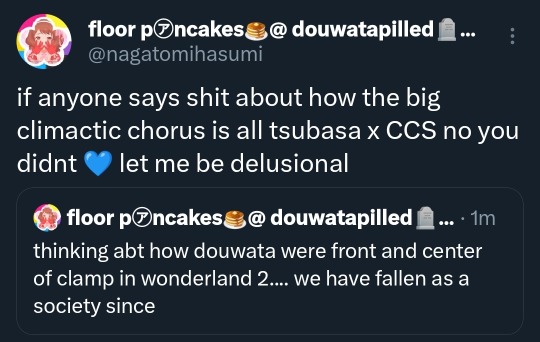
its about perspective dont look at me
#LISTEN#we used to be a real country#i say knowing tsuba was always the favoured sister series#but COME ON NOW....#i suppose they both got iconic spots#they should make clamp in wonderland 3 that is just douwata#im joking i love the variety but i want to eat up more holic content yum#unless the holic content is a weird plot twist in rei or something#if the continuation after all that hiatus time ends up being a tsuba fetch quest or making watanuki clow im going to start#punching people#and hitting clamp with large hammers#i love clamp but i have one eye open at night imagining the things that could go wrong with rei#it has to be said#this isnt what this post was about OOPS#xxxholic#i know 99 percent of the few clamp fans there are left are tsuba mains#and that it has always been this way#dont question my actions its ok be not afraid#its clamp i have beef with lol#but also clamp r so cool#but also i have beef iwth them#such is being a clamp stan#twitter repost#rambling dont mind me#**meant to say 99 percent of the holic fans are tsuba mains#makes me feel kinda awkward cause im not a fan of tsuba altho im down to give it another try later#and i feel. mixed feelings as to clamp has handled their connection#especially cause it feels like holic is the 'losing side' and was always less favoured#but thats old news by now it just makes me nervous to bring that up now i actually follow a lot more fans Lol
4 notes
·
View notes
Text
Why is everyone so hung up on NoA's use of the word "inkling????" I've seen so many posts lately that are like "it doesn't make sense that the squid people are called inklings since octolings use ink too so it should be a general term and the squid people should be called squidlings!!!" and like. Yeah. That's true I guess. I dunno, I never really particularly cared about it that much, it's kind of a nitpick. And like—something about "squidling" as a word feels super weird and awkward to me and I don't entirely know why? I think it has something to do with the consonants? Or maybe it's my imagination, who knows. Either way I don't entirely get why people have been getting so hung up on it lately.
#splatoon#thanks NoA for that mistranslation#idk#i think in jp they're referred to as like#squid-inkling and/or octo-inkling#and 'octoling' in the english translation#came from a misunderstanding of the word 'takozoness'#which was meant to refer SPECIFICALLY to the RIVAL octolings#but NoA thought it was a more general term???#i dunno correct me if im wrong on this#its weird because ive only rlly seen ppl care about it recently???#its like the tartar stuff#but stranger since inkling and octoling have existed since the very beginning of the series#maybe people were having issues with it before i dunno#there's definitely been more since splatoon 3#so yeah#not saying its dumb to be upset about it because it IS true but#idk i dont particularly care personally
7 notes
·
View notes